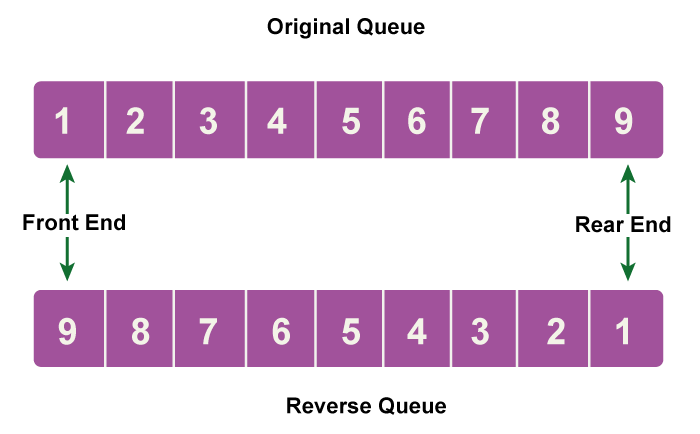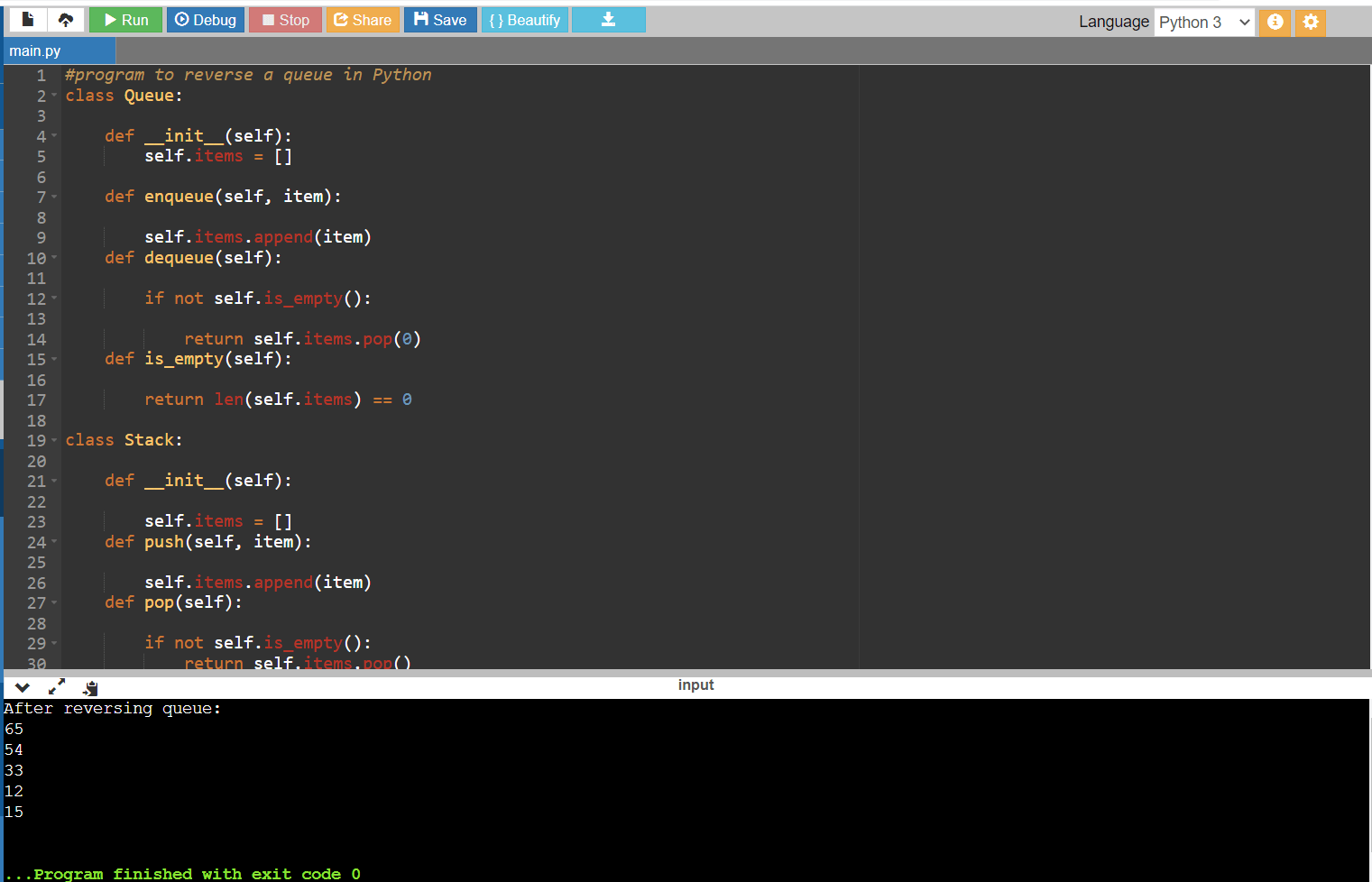Reversing a QueueReversing a queue is the process of making the first element as last and the last element as first. By reversing a queue, we alter the sequence in which its elements will be processed or accessed. This can be done by storing the temporary components in the Stack and then returning them to the Queue whenever required in reverse order. 
The above picture shows the clear difference between the original (given) queue and the reversed queue. The front and rear ends are used to reverse the queue. Steps to reverse a QueueStep 1: Create a Queue and a Stack initially. Both Arrays or linked lists can be used to implement. Assume we're working with an array-based implementation. Step 2: Enqueue Elements into the Queue Add some components to the Queue to populate it. Step 3: Move Elements from the Queue to the Stack is the third phase. Begin by moving all of the elements from the Queue to the Stack. Repeat through the Queue's items, inserting each one with the Stack's push function. Step 4: Transfer Elements from the Stack to Queue Next, transfer the elements from the Stack back to the Queue in the reversed order. Iterate over the elements in the Stack and use the Queue's enqueue operation to insert each element. This step effectively reverses the elements in the Queue. Step 5: Reversed Queue At this point, the original Queue has been reversed. You can now perform operations in the reversed Queue as desired. Algorithm OverviewThe process of reversing a queue using a stack as an auxiliary data structure can be summarized as follows:
You can successfully reverse a queue using a stack as an auxiliary data structure if you follow these instructions. Remember to customize the implementation to your programming language. Example ImplementationHere's a Python implementation of the above algorithm: Below shown is the reverse function using Stack in Python. In this implementation, Queue represents the input queue that you want to reverse. The reverseQueue function uses the empty, dequeue, append, and pop methods to manipulate the Queue and Stack. Using a stack as an auxiliary data structure, you may reverse a queue. The technique includes moving all elements from the Queue to the Stack and then returning them to the Queue in reverse order. Below is a way to reverse a queue process by stage: Example:Let's take an example of how to reverse a queue using the auxiliary stack approach. Consider the following Queue: Original Queue: [15, 2, 19, 3] 1. As per the first step, we initialize an empty queue and an empty stack. Queue: [] Stack: [] 2. As per the second step, enqueue elements into the Queue We enqueue the elements [15, 2, 19, 3] into the Queue. Queue: [15, 2, 19, 3] Stack: [] 3. As per the third step, move all the elements from Queue to Stack Queue: [] Stack: [15, 2, 19, 3] 4. Transfer Elements from Stack to Queue Queue: [3, 19, 2, 15] Stack: [] 5. Reversed Queue The original Queue has been successfully reversed. The resulting Queue is [3, 19, 2, 15] We can perform any operations we want on the reversed Queue at this point. This is an example of how to reverse a queue using an auxiliary stack. Here's an example implementation of the queue reversal algorithm in Python: Below is an example for the Python code, which reverses the given original queue as shown in the first image. Execution and Output: 
So, the Queue after reversing resulted in the following order: 65, 54, 33, 12, 15. Finally, we have successfully reversed the Queue using a stack as an auxiliary data structure. To summarize, reversing a queue includes rearranging its members so that the first element becomes the last and vice versa. Reversing a queue can be beneficial in a variety of cases when components must be processed in a different order.
Next TopicDifferent Types of Stack Operations
|
 For Videos Join Our Youtube Channel: Join Now
For Videos Join Our Youtube Channel: Join Now
Feedback
- Send your Feedback to [email protected]
Help Others, Please Share










